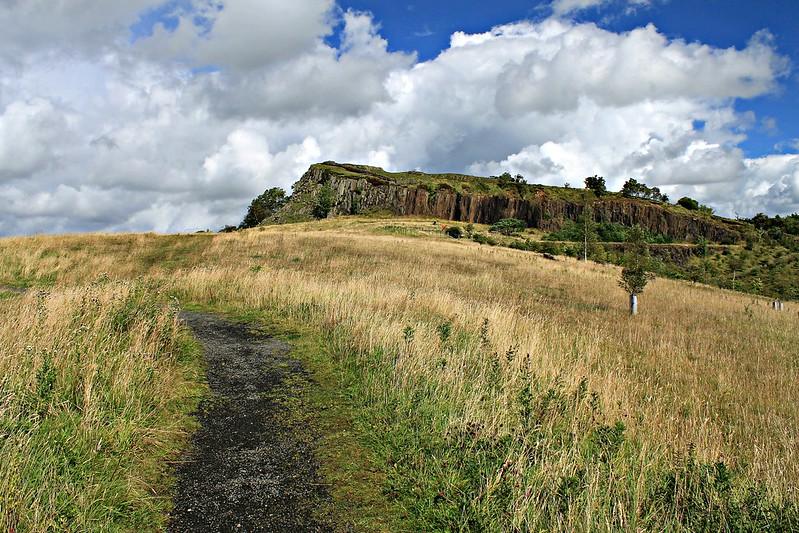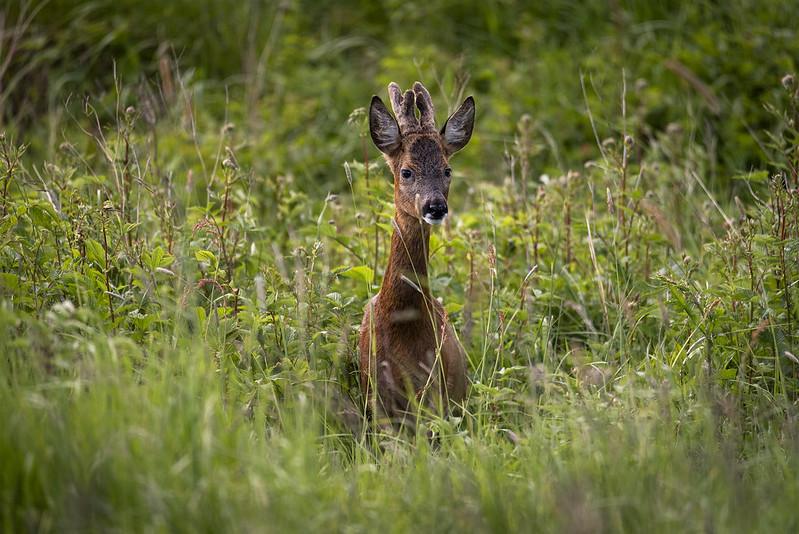Northumberland National Park, located in the northernmost part of England, is a hidden gem that boasts a rich tapestry of natural beauty and diverse ecosystems. Spanning over 1,000 square kilometres, this national park is characterised by its rolling hills, rugged moorlands, and tranquil rivers.
It is a sanctuary for wildlife and a haven for outdoor enthusiasts, making it a perfect destination for those seeking to connect with nature. In this article, we will explore the unique landscapes, biodiversity, outdoor activities, and conservation efforts that make Northumberland National Park a remarkable place to visit.
Discovering the Unique Landscapes of Northumberland National Park
The landscapes of Northumberland National Park are as varied as they are breathtaking. From the expansive heather-clad moors to the dramatic crags of the Cheviot Hills, the park offers a visual feast for visitors.
The park's topography is shaped by ancient volcanic activity, glacial erosion, and the relentless forces of nature, resulting in a diverse array of geological features. The iconic Hadrian's Wall, a UNESCO World Heritage Site, runs through the park, providing a historical context to the stunning scenery.

One of the most striking aspects of the park is its vast open spaces, which are often punctuated by tranquil lakes and rivers. The River Coquet, for instance, meanders through the landscape, offering picturesque views and opportunities for wildlife spotting.
The park's high-altitude areas, such as the Cheviot Hills, provide panoramic vistas that stretch for miles, allowing visitors to appreciate the sheer scale and beauty of the Northumberland countryside. The changing seasons bring a dynamic quality to the park's landscapes.
In spring, vibrant wildflowers bloom across the moors, while summer offers lush greenery and the chance to witness the park's wildlife in full activity. Autumn transforms the landscape into a tapestry of golds and reds, and winter blankets the hills in snow, creating a serene and magical atmosphere. Each season presents a unique opportunity to experience the park's natural wonders.
Moreover, the park's remote location contributes to its unspoiled charm. With minimal light pollution, Northumberland National Park is one of the best places in the UK for stargazing. The dark skies are home to a dazzling array of stars, planets, and celestial phenomena, making it a paradise for astronomers and night sky enthusiasts.
This combination of unique landscapes and natural beauty makes Northumberland National Park a must-visit destination for nature lovers.

Biodiversity: Flora and Fauna of Northumberland’s Ecosystem
Northumberland National Park is home to a rich and diverse array of flora and fauna, making it a vital ecosystem within the UK. The park's varied habitats, including heathlands, woodlands, wetlands, and grasslands, support a wide range of species. The heather moorlands, in particular, are a defining feature of the park, providing a habitat for numerous birds, insects, and mammals.
Species such as the red grouse and the curlew thrive in these unique environments. The park is also home to several rare and protected species, including the elusive black grouse and the endangered adders. The diverse habitats support a variety of plant life, from the vibrant purple heather that carpets the moors to the ancient oak woodlands that provide shelter for many species.
The presence of these unique plants and animals highlights the ecological significance of Northumberland National Park and the importance of preserving its natural heritage.

In addition to its terrestrial biodiversity, the park's rivers and wetlands are teeming with life. The River Coquet, for example, is an important habitat for fish species such as salmon and trout, while the wetlands support a variety of amphibians and invertebrates.
The park's diverse ecosystems create a delicate balance that is essential for the survival of many species, making conservation efforts crucial for maintaining this biodiversity. The park's commitment to biodiversity is further exemplified by its participation in various conservation programs and initiatives.
These efforts aim to protect and restore habitats, monitor species populations, and promote sustainable land management practices. By fostering a healthy ecosystem, Northumberland National Park not only supports its native wildlife but also enhances the overall experience for visitors who come to appreciate its natural beauty.
Outdoor Activities: Adventure Awaits in the National Park
Northumberland National Park is a playground for outdoor enthusiasts, offering a wide range of activities for visitors of all ages and skill levels. Hiking is one of the most popular pursuits, with an extensive network of trails that cater to both casual walkers and seasoned trekkers.
The Pennine Way, a renowned long-distance trail, runs through the park, providing breathtaking views and a chance to immerse oneself in the stunning landscapes.

Cycling is another fantastic way to explore the park, with numerous routes available for mountain bikers and leisurely cyclists alike. The park's varied terrain offers challenges for experienced riders, while gentler paths are perfect for families looking to enjoy a day out on two wheels.
Cycling through the park allows visitors to experience its beauty at a different pace, with opportunities to stop and appreciate the scenery along the way. For those seeking a more adventurous experience, Northumberland National Park offers opportunities for rock climbing and abseiling.
The rugged crags and cliffs provide ideal conditions for climbers of all abilities, with local guides available to assist beginners. Additionally, the park's rivers are perfect for canoeing and kayaking, allowing visitors to explore the waterways while taking in the surrounding natural beauty.
Wildlife watching is another rewarding activity in the park, with opportunities to spot a variety of species in their natural habitats. Birdwatchers can enjoy the sights and sounds of numerous bird species, while those with a keen eye may catch glimpses of deer, foxes, and other wildlife.
With so many outdoor activities available, Northumberland National Park is an ideal destination for adventure seekers and nature lovers alike.

Conservation Efforts: Protecting Northumberland’s Natural Heritage
Conservation is a top priority for Northumberland National Park, as the park's unique landscapes and biodiversity face various threats from climate change, habitat loss, and human activity. The park's management team works diligently to implement conservation strategies that aim to protect and restore the natural environment.
These efforts include habitat restoration projects, species monitoring, and community engagement initiatives. One of the key conservation initiatives in the park is the management of its heather moorlands. These habitats are not only important for wildlife but also play a crucial role in carbon sequestration and water management.
The park's team collaborates with local landowners and conservation organizations to promote sustainable land management practices that benefit both the environment and the local community. In addition to habitat management, Northumberland National Park is actively involved in species conservation programs.
This includes monitoring populations of rare and endangered species, such as the black grouse and the red squirrel. By gathering data on these species, park authorities can develop targeted conservation strategies to ensure their survival and promote biodiversity within the park.
Community involvement is also a vital component of the park's conservation efforts. Educational programs and volunteer opportunities encourage residents and visitors to engage with the natural environment and contribute to conservation initiatives.
By fostering a sense of stewardship in the community, Northumberland National Park aims to create a sustainable future for its natural heritage, ensuring that future generations can enjoy its beauty and biodiversity.
In conclusion, Northumberland National Park is a remarkable destination that offers a wealth of natural wonders, diverse ecosystems, and outdoor adventures. From its unique landscapes and rich biodiversity to its commitment to conservation, the park stands as a testament to the beauty and importance of preserving our natural heritage.
Whether you are an avid hiker, a wildlife enthusiast, or simply seeking a peaceful nature retreat, Northumberland National Park has something to offer everyone. As we continue to explore and appreciate these natural wonders, it is essential to support conservation efforts that protect this invaluable resource for generations to come.
Northumberland National Park FAQs
Where is Northumberland National Park located?
Northumberland National Park is located in the northernmost part of England, stretching from the Scottish border in the north down to Hadrian’s Wall in the south. It covers a vast area of rural landscapes, including parts of the Cheviot Hills.
What is Northumberland National Park known for?
The park is known for its stunning natural landscapes, including rolling hills, river valleys, ancient woodlands, and rugged moorlands. It is also famous for its dark skies, making it one of the best places in the UK for stargazing. The park encompasses historic sites like Hadrian’s Wall and offers a haven for wildlife enthusiasts.
What are the main attractions in Northumberland National Park?
Key attractions include Hadrian’s Wall, the Cheviot Hills, Kielder Water and Forest Park, Simonside Hills, and the Coquet Valley. The park is also home to the Northumberland International Dark Sky Park, where visitors can enjoy incredible stargazing opportunities.
What outdoor activities can I do in Northumberland National Park?
Northumberland National Park offers a wide range of outdoor activities, including hiking, cycling, horse riding, and wildlife watching. Popular trails include the Pennine Way and St. Oswald’s Way. The park is also great for fishing, rock climbing, and water sports in Kielder Water.
How can I get to Northumberland National Park?
The park is accessible by car, with major roads like the A1 and A68 providing good access. The nearest train stations are in Hexham, Alnmouth, and Morpeth, from where buses and taxis can take you further into the park. There are also bus services that connect key parts of the park to nearby towns.
Is there an entrance fee for Northumberland National Park?
No, entry to Northumberland National Park is free. However, some specific attractions within the park, such as visitor centres, museums, or guided tours, may have fees.
Can I see wildlife in Northumberland National Park?
Yes, the park is rich in wildlife, with opportunities to see red squirrels, otters, ospreys, and a variety of bird species. The diverse habitats support a wide range of flora and fauna, making it a great destination for nature enthusiasts.



